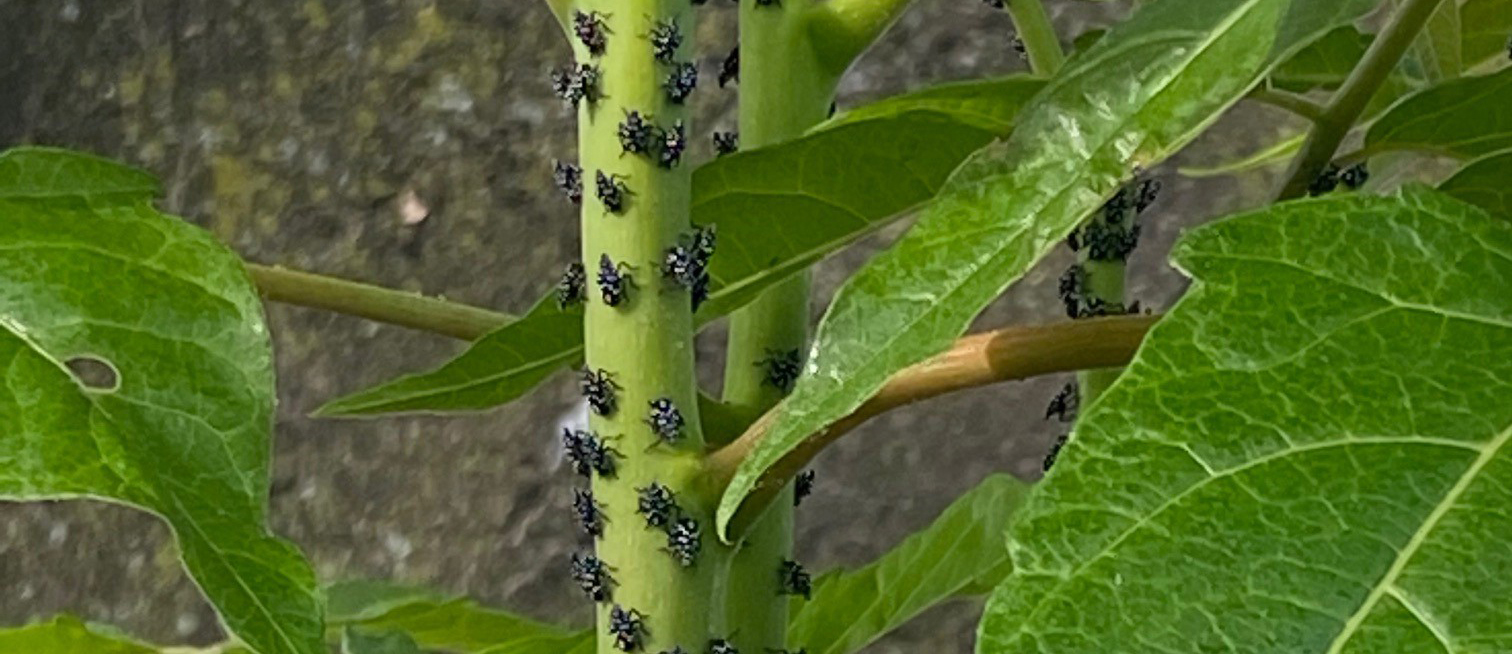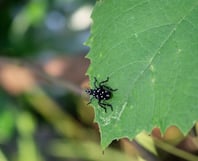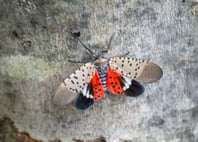Spotted Lanternfly FAQ

Spotted Lanternflies are a relatively new pest introduced to the New Jersey, Pennsylvania, Delaware, and Maryland areas. First spotted in 2014 in Pennsylvania, the Spotted Lanternfly is an invasive pest causing a threat to trees around your home or business. Read on to learn more about the Spotted Lanternfly with our FAQ and how to protect your home or business from these invasive pests.
What Happens if a Lanternfly Bites Me?
While these insects can be annoying, the spotted lanternfly does not bite humans. Their mouths look like a straw-like beak that is used to extract the sap from plants.
This tiny beak is not able to penetrate human skin, and overall the bugs are mostly harmless to humans. You may feel a slight pinch if one lands on you, but that's from the insect's legs and not from a bite.
Do Spotted Lanternflies Cause Damage?
The spotted lanternfly is not known for causing structural damage like a termite can; however, spotted lanternflies can cause damage to your trees and surrounding greenery. Spotted Lanternflies crawl on plants and trees extracting the sap from the plant. During this process, the plant or tree can begin to wilt or die.
In addition, the waste product of these pests (called "honeydew") are full of sugar. When they excrete honeydew, this will promote the growth of sooty mold. This black mold can be unsightly and odorous, as well as difficult to remove from your belongings if it spreads (for example, it can get onto your deck and driveway).
What Does a Spotted Lanternfly Look Like?

Spotted lanternflies hatch in the spring and appear as wingless nymphs that hop around to feed and molt. Once they perform their final molting as an adult, they start to fly.
The nymphs are black with white spots and are about the same size as an ant. As they grow, the spotted lanternfly gets larger and starts to turn red in color. Adult lanternflies typically appear near the end of July, but you may see them linger as late as October depending on the conditions.
grow, the spotted lanternfly gets larger and starts to turn red in color. Adult lanternflies typically appear near the end of July, but you may see them linger as late as October depending on the conditions.
A mass of spotted lanternfly eggs will overwinter, then hatch in the springtime. A standard lanternfly egg mass can contain around 30-50 eggs, and females may lay between two and three egg masses in their lifespan.
When do Spotted Lanternflies Lay Their Eggs?
In New Jersey, Pennsylvania, Delaware, and The Eastern Shore of Maryland, Spotted Lanternflies begin laying their eggs in September. Recognizing their egg masses and eradicating them will help greatly in controlling the spread of these invasive pests.
What do Spotted Lanternfly Egg Masses Look Like on Trees?

The size of the mass can vary, but a Spotted Lanternfly egg mass is typically about an inch long by 3/4 of an inch wide and look like light grayish splotches of mud or mortar/cement. On some surfaces, there can be multiple egg masses.
How Many Eggs are in a Spotted Lanternfly Egg Mass?
A single egg mass can contain 30 - 50 eggs.
What to do with Spotted Lanternfly Egg Masses
If you notice Spotted Lanternfly eggs, it is important to remove the eggs or call your local Department of Agriculture to report your findings. To remove Spotted Lanternfly eggs yourself, here are a few tips:
- Use a paint scraper or metal spatula to remove the egg mass from the surface
- Place the eggs into a plastic bag with hand sanitizer or alcohol
- Eggs should be scrapped off and removed from structures prior to their hatching in spring to reduce the spread of this invasive pest.
- Click here to get a FREE Spotted Lanternfly Egg Removal Card
What is the Lifecycle of a Spotted Lanternfly?
Eggs - October - May
Black Nymph - May - July
Fourth Instar - July - August
Adults - August - November
Egg Laying - September - November
When do Spotted Lanternfly Egg Masses Hatch?
Spotted Lanternflies begin hatching in late April throughout NJ, PA, MD, and DE.
What is a Spotted Lanternfly Quarantine?
Counties or states in a Spotted Lanternfly quarantine are advised to follow regulations to help stop the spread of this invasive pest. Regulations include properly inspecting objects before moving them or traveling to other locations and more. Click your state's link below to learn about specific regulations in your area.

Click here for Pennsylvania Spotted Lanternfly Quarantine Regulations
Click here for New Jersey Spotted Lanternfly Quarantine Regulations
Click here for Delaware Spotted Lanternfly Quarantine Regulations
Click here for Maryland Spotted Lanternfly Quarantine Regulations
What Do Spotted Lanternflies Eat?
The spotted lanternfly likes to eat the sap from a variety of plants. Their favorite tree includes the ailanthus tree, also known as the tree of heaven.
These flying insects also like to feast on walnuts and grapevines, but they'll drink sap from almost any hardwood tree if they can find it. The pests prefer pine trees the least, but they'll utilize a wide array of host plants to find the food they need.
As far as what eats a spotted lanternfly, praying mantises and spiders seem to be their main predators. Most birds won't eat these insects; however, there could be some bird species that enjoy them.
Do Spiders Eat Spotted Lanternflies?
There are very minimal preditors to the spotted lanternfly. Some general predators have been observed eating spotted lanternflies, such as praying mantis, wheel bugs and spiders. Unfortunately the numbers of lanternflies are too overwhelming for those predators to have a significant impact at this point.
Do Chickens Eat Spotted Lanternflies?
We have heard reports of different types of birds being seen eating them, but not in any great numbers. We also find spotted lanternflies with missing wings and legs that could indicate a bird “tasting” them and spitting them out. We gave them the “chicken test”. As anyone who has owned chickens knows, chickens will eat pretty much any insect they encounter with great enthusiasm. When we tried feeding spotted lanternflies to our chickens, they came running to see what the prize was and then turned their backs on them. This seems to indicate that they are unpalatable to birds, but more research is needed beyond the chicken test.
Viking is the Spotted Lanternfly Pest Control Expert. Help Stop Spotted Lanternflies!
Thanks to these spotted lanternfly FAQs, you can be prepared for hatching season. Although these flying insects don't bite, their sheer numbers can easily become a nuisance.
If you are noticing Spotted Lanternfly activity around your home or business in NJ, PA, DE, or the Eastern Shore of MD, request a fast, free estimate online, or call us at 1-800-618-2847 to learn more about the spotted lanternfly treatment options in your area.











